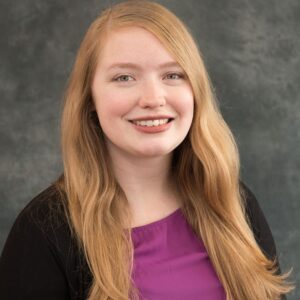Crisis Communication in Higher Ed: Pepperdine’s Wildfire Response
See how Pepperdine University redefined crisis communication in higher ed by prioritizing safety, faith, and storytelling during the California wildfires.
Featured
Higher ed advancement can sometimes feel like an uphill battle as marketing and advancement work together to cultivate new gifts and renew current donors.
But how much easier would it be if your school, college, or university just had a culture of philanthropy in which the general expectation of each alum was to pay it forward?
I remember our conversation earlier with Bill Stanczykiewicz on The Higher Ed Marketer podcast where he brought up this idea of getting that culture of philanthropy into your student body.
There were so many good insights in that conversation that we weren’t able to really flesh out that particular concept as much as I would have liked.


Through education and volunteer programs, they’re preparing the next generation of philanthropists right from the moment they enter their first classes.
Being over 140 years old, the University of Findlay has around 28,000 alumni, which means they have a good number of living alumni to whom they can market and cultivate gifts.
That’s the good news.
But it also means that with so many people in their alumni base, they have the considerable challenge of marketing to multiple marketing personas with young alumni who are Generation Z all the way up to the Silent Generation who are in their 90’s.
This is how they are tackling this important challenge.
I like to call it a “cross functional approach” to how we communicate with our alumni.
[An example of the cross functional approach is] if we have a piece that we mail out, we have to figure out how to create that piece in many different types of communication.
So it’s going to be in a hardcopy, it’s going to be an email, and it’s also going to have to translate into social media—because our donors are going to absorb that in all of those different ways.
A lot of times advancement offices fail to see that different personas respond to different communication channels in different ways.
There is no one size fits all with such a diverse audience as an alumni base of 28,000!
Generation Z are not likely to open the letters, and the traditionals or the Silent Generation are not likely to be scrolling through TikTok.
This approach alone is a very useful insight for higher ed advancement marketing. But we quickly moved on to get to the core of the conversation.
How can we create a culture of philanthropy among our current students even from the first day that they walk into class?
Getting students involved in giving—even at the economic level that they are at—helps them understand as young adults and young donors, how important philanthropy is.
This is making a huge difference in the University of Findlay’s capital campaign.
Amanda and Brittany explain.
I would say we are trying to build a culture of philanthropy from the moment the students walk in the door.
We actually have a freshman service project in which every freshman is required to do a service project, not only on campus, but throughout the community as well.
It really gets them introduced to the concept of philanthropy because it’s not always a known concept if you haven’t been raised in a household where philanthropy is spoken and practiced regularly.
I love how this project gets students to begin thinking in terms of paying it forward right from the moment they enter the door.
While I have no problem with a good call to action, this is a long-term approach to higher ed advancement rather than simply taking the fast, transactional approach to fundraising.
Of course, cultivating a culture of philanthropy doesn’t stop with the freshmen.
Amanda and Brittany explain how they follow through all the way into graduation with this culture of giving.
Well, I’m always excited to talk about this! We have a graduating class gift “philanthropy cord” program.
This program launched in our 2015-2016 academic year, and it is one of the first nationally recognized programs of its kind.
It is a program for our graduating seniors to learn more about philanthropy and then earn a green cord to wear at graduation.
In order to earn the philanthropy cord, there are three components. The first one is education.
We invite them to in-person, on-campus, and virtual education events to teach them about the importance of philanthropy. [In these events, they learn] how you can be philanthropic in your life as a student, as an alum, and well into your life.
Another component is the service component that I mentioned.
As I mentioned earlier, when the freshmen come in, they do a service project. But then we “bookend” by asking [graduating] students to do at least six hours of community service in the last three semesters of graduation. And that counts for the completion of that component for the philanthropy cord.
The final component is giving a class gift that goes to a scholarship for an incoming student in need.
It really makes a difference! The students realize that they’re giving back money that is going towards students like them.
Working in higher ed advancement can be discouraging when you hear the word “No” from potential donors.
But by imprinting philanthropy on your student culture, you can encourage them to pay it forward to future fellow alums from the very second they set foot on campus.
Like all of our blog post reviews of The Higher Ed Marketer podcasts, there’s so much more to learn in the podcasts themselves.
Listen to our interview with Amanda Nicol and Brittany Beltz to get even more insights into:
Then you’ve got to know how to write for the web. That’s why we want to send you our popular ebook: Writing for the Web: 7 Secrets to Content Marketing Success for Education Marketers!
With this helpful resource, you’ll learn how to:
In short, you’ll be able to write the copy that makes your digital marketing strategy work for you. Download your copy today!
Featured image via University of Findlay
Subscribe to The Higher Ed Marketer podcast today!